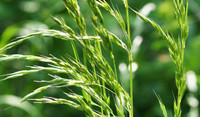
Controlling tier two weeds

These weeds are commonly found in autumn and spring-sown crops and, despite typically having shorter growth habit compared to grassweeds such as black-grass, can still pose a significant threat to the yield of commercial crops thanks to their ability to thrive in arable fields. In fact, it takes just five chickweed plants per m2 to reduce crop yield by 1%. Likewise, as few as 2-3 common poppy plants will cause a similar reduction in yield, putting it on a par with the yield robbing competitive ability of black-grass and charlock. (Source: Marshall EJP et al., (2003) The role of weeds in supporting biological diversity within crop fields. Weed Research 43, 77-89.)
These weeds species pose different levels of competition at different times within the season and therefore need to be controlled at a range of timings. Factors such as the variety being grown will also impact spraying decisions as shorter varieties can allow more light into the canopy to the benefit of recently emerged weed plants. Climate change can also benefit weed growth especially if, like last year, important early season spray timings are missed due to unfavourable weather and soil conditions. Flexible herbicides such as TOWER (a unique three-way formulation of chlorotoluron, diflufenican and pendimethalin) should therefore be included within the spray programme as they offer good protection at both the pre- and post-emergence spray timings which gives growers and spray operators some leeway when it comes to scheduling applications around wet and/or windy conditions.

Broadleaved weeds such as groundsel can be difficult to control as they produce several generations of plants in a single growing season. Photo: NIAB Groundsel trial
As the chart below indicates, TOWER delivers excellent control of a range of broad-leaved weeds. And although it doesn’t guarantee 100% control of trickier weeds such as groundsel which has a an extremely wide germination window, it does give growers a range of application options and, crucially, buys time for any follow-up applications to be made.

Application decisions
In situations where a relatively low population of broadleaved weeds exists, a single, standalone application of TOWER may suffice to minimise weed competition during crop establishment and is a simple ‘one-stop’ option in the autumn for growers who aren’t faced with a serious black-grass or ryegrass burden.
On land with a more significant infestation of broadleaved weeds, TOWER can be used in combination with a wide list of compatible tank mix partners. For example, where groundsel is a problem, TOWER plus a low rate of a sulfonylurea (SU) herbicide such as tribenuron will clear populations in the spring. For more severe infestations, a higher rate of tribenuron, or a hormone combination, will be needed.
TOWER®: an exclusive three-way co-formulation
TOWER is an exclusive co-formulation of three active with complementary modes of action for optimal grass weed control and resistance management.
In addition to providing excellent control of annual meadow grass and broadleaved weeds, TOWER also provides good activity against grass weeds in winter and spring wheat, winter and spring barley, winter rye and winter triticale.
Three active ingredients:
- 250 g/l chlorotoluron
- 40 g/l diflufenican
- 300 g/l pendimethalin

With a flexible product label, TOWER can be used as a pre- and/or post-emergence treatment in winter cereals and spring wheat and spring barley.
For more information about which active ingredients TOWER can safely and effectively be used alongside, please visit the ADAMA Tank Mix Database at https://www.adama.com/uk/en/database-adamas-tank-mixes
Latest articles

Powering up slug control: the importance of mould resistance

Powering up slug control: pellet timing and baiting point density are critical
